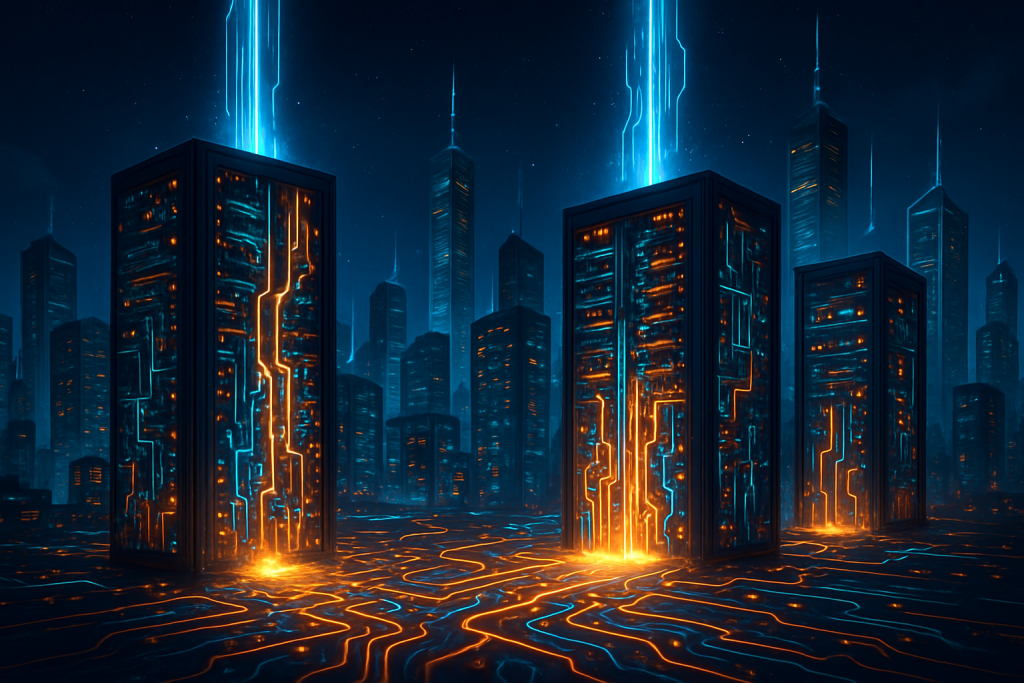Hold onto your hats, folks, because the AI arms race just went supersonic. Yesterday, September 24, 2025, OpenAI and Oracle dropped a bombshell: a massive expansion of their AI infrastructure, headlined by the already operational Stargate data center in Abilene, Texas, and plans for five more locations across the good ol’ US of A. We’re talking serious coin here- over $400 billion over the next three years. To put that in perspective, that’s like building, oh, I don’t know, five Death Stars (minus the pesky exhaust port weakness, hopefully).
This isn’t just about faster chatbots or slightly more realistic deepfakes. This is about foundational infrastructure, the very bedrock upon which the next generation of AI will be built. Remember Moore’s Law? Well, buckle up, because what OpenAI is doing makes even Gordon Moore’s predictions look like dial-up internet.
Let’s rewind a bit. The Stargate data center, already humming away in Abilene since June, is no joke. We’re talking about a facility designed to scale beyond one gigawatt of capacity. That’s enough juice to power roughly 750,000 American homes. Think about that- a single data center, dedicated to AI, drawing enough power to keep a small city buzzing. Oracle, bless their enterprise-grade hearts, delivered the first Nvidia GB200 racks to Stargate, effectively kickstarting the whole shebang. The five new sites are strategically placed: two more in Texas (Shackelford and Milam counties), one in New Mexico (Doña Ana County), another in Ohio (Lordstown), and a mysterious, yet-to-be-revealed location somewhere in the Midwest. It’s like they’re playing AI infrastructure bingo, and everyone wins (or maybe loses, depending on your perspective).
So, why all the fuss? OpenAI’s CFO, Sarah Friar, put it bluntly: “No one in the history of man built data centers this fast.” That’s not just corporate hype; that’s a gauntlet thrown down. OpenAI, fueled by seemingly limitless ambition (and capital), aims to hit its full $500 billion, 10-gigawatt commitment by the end of 2025. Ahead of schedule, mind you. It’s like they’re trying to outrun Skynet itself.
The geopolitical angle here is thicker than a Texas barbecue sauce. The project has the enthusiastic backing of the Trump administration, which sees it as vital for maintaining American dominance in the AI space. But that support comes with questions. Where is all this money coming from? How much is Nvidia benefiting, especially given that CEO Jensen Huang reportedly personally negotiated with OpenAI’s Sam Altman to get Nvidia fully on board? It’s a tangled web of silicon, stock options, and strategic alliances.
This whole situation brings up some serious questions. Remember HAL 9000 from 2001: A Space Odyssey? Or maybe the Matrix? While we’re probably not facing a sentient AI uprising just yet, the sheer scale of this infrastructure raises ethical and philosophical concerns. Are we building these tools responsibly? Are we thinking about the potential consequences of unleashing this much computational power? Are we sure we haven’t accidentally created a digital paperclip maximizer that will pave the Earth with office supplies?
And then there’s the financial fallout. A $400 billion investment is not exactly pocket change. What does this mean for the stock market? For energy consumption? For the availability of rare earth minerals needed to build all this hardware? Are we creating a massive AI bubble that’s destined to burst? Or are we laying the foundation for a new era of economic prosperity, driven by intelligent machines?
The answers, as always, are complex and uncertain. But one thing is clear: the AI landscape is changing faster than ever before. OpenAI’s Stargate and its planned siblings aren’t just data centers; they’re monuments to human ambition, technological innovation, and, perhaps, a healthy dose of existential dread. So, keep your eyes on the skies (and your servers humming), because the future of AI is being written right now, one gigawatt at a time.
Discover more from Just Buzz
Subscribe to get the latest posts sent to your email.


